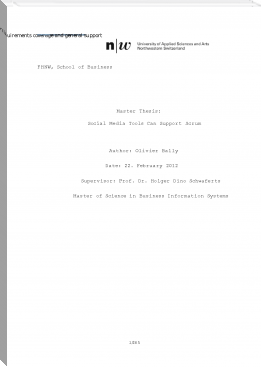System Engineering & Design Architecture by Sander R.B.E. Beals (important books to read TXT) 📕

Read free book «System Engineering & Design Architecture by Sander R.B.E. Beals (important books to read TXT) 📕» - read online or download for free at americanlibrarybooks.com
- Author: Sander R.B.E. Beals
Read book online «System Engineering & Design Architecture by Sander R.B.E. Beals (important books to read TXT) 📕». Author - Sander R.B.E. Beals
Our Environment (as was just pointed out) is the Earth. We are bound to it by the most grave of forces, called Gravity. And that is not just in one aspect: even if we are able to defy physical gravity, we still care about what happens to our planet, which can be called gravity in a psychological context. Likewise, that same gravity is related to our selves, since we see anything first of all as a first person event. So in any view of ourselves as a System we can already discern three Environ-ments in which we live: Personal, Psychological and Physical. Actually, that is just the threesome I picked, and it may very well be different for you!
Now personally, we may see Matter and Energy as two concepts, of which one is made up of the other. Einstein's formula E=mc^2 made it clear that Energy is condensed into matter, which makes Energy the base material of this reality. Purely theoretical of course, the formula only shows that both are the same, and we can take either end to be the base for the other! Inside the material and the energetic we see ourselves living, and interacting. The normal center of this we call Society (Common Consensus Reality I call it), although sometimes there aren't that many social aspects to it..... In the end though, it is our personal belief system that shows us how the parts of this puzzle fit together, if we are at all interested in the answer to that question, that is....
So what we do see here clearly, is that any system can be part of many surrounding systems, that clearly do not all have well-defined relationships to one another. Likewise, the Interfaces we developed are also aimed at various fellow systems in one of our Environments: to interact socially we might use Facebook, but to interact with our pets we might require play toys or treats (some even use threats!). Now the Interfaces of a System are kinda like the leash we humans tend to use to keep our pets from straying: regardless which environment they enter, we still have a way of getting to them, once they are lost from sight. And the leash is bilateral: a dog like a Rottweiler can pull you just as hard as you can pull it, or even more!
I don't know about you, but I tend to be somewhat cautious of making lasting connections. Call it a side-effect of my aim to stay balanced in the middle like the Buddha came to the same conclusion. Still though, even like he sat under a Bodhi tree for eight years, I have depended on my 'Body tree' to keep me safe. And of course it would be too obvious to point out that the tree is a concept of Balance: it has as many 'branches' underground as it has in the sky!
System ConceptionFrom here on in, we will parallel a few aspects: on the one hand we are going to make clear how it is thought Systems naturally develop. On the other hand, we are going to try and apply this concept to the development of a software system to solve the problem of problem solving or evolving itself. The example should then give us a fair idea of just how to apply the theory, and reach a viable end result. In order to do this, we are first going back to the ancient oriental concept that already showed us the essence of a System: it has two aspects, namely how it reacts to the Environment, and how the environment reacts to it. The ancient Eastern civilizations showed this aspect of Life in the Yin and Yang symbol.
Now development of Systems in my humble opinion is a process much like the graphical evolution of a Yin and Yang to a full-blown SevenSphere. It is a process much like cell division, which most of us have seen happening on television, or other devices that show scientific fact.
The start of a system comes with the recognition of its being needed or wanted in some way. An imaginary System is nothing more than an empty space in the womb of the future users, passed on to the group of developers who take it upon themselves to create the system. Whether the desire is seen as a problem or a possible solution says a lot about how it is eventually going to be conceived. In this case we want to make a system to solve for us the challenge of systems design and engineering.
We are going to inject an idea into that central core, which should eventually deliver us an ideal system to bring about the birth of a desire for something new, something unheard of in our environment. But with our idea comes the initial interface of our 'solution', the one that it has towards the world we conceive it in, for all is Balance. Please note, that the interface may be formed as we want it to be, without any thought to what is eventually going to be needed behind the scenes to make it all work. Like Einstein said: "I want to know God's thoughts, the rest are details!". Here we want to see creation at its best, not fear of complexity. Of course this does not apply to the interface itself: this should be intuitive and useful rather than a work of complexity, for simple interfaces breed simple systems, which do not require much learning in order to use them. It is like riding a bike vs. Flying a 747: the latter requires years of practice, and the other only basic (and mostly subconscious) understanding of the laws of equilibrium....
That in turn is immediately followed by our attention to define this interface as we want it to be, which as common saying has it: "It is all about appearances." We focus on the outside of the system first, like an artist molds the clay: he may not care which clay is where on the inside, as long as the outer form is to his or her liking.... (see 'Nurture the Planet', on the right, by Harry Matti Hukkinen). In this same manner I got a 9 out of 10 for my exam project, even though it didn't work! The interface was good, and the presentation also, so the one defect I still had to fix was skipped...
Of course clay forms are simple, as they come: most systems are more complex, although they follow the basic simple strategies outlined in Appendix A. Thus, in order to create something more to our liking, we start by applying the rules from Appendix A to our design: if we only look at what we have now, the simplest representation would be one system with one interface, the boundary of the form and its environment. But in our symbiotic approach, the designing of a system for problem solving, we will need a little bit more. Thus, we design an interface to have a certain effect upon the environment: if we want it to be controlled by humans, then the interface must match the perception, comprehension and manipulation skills of the average human, if it is to be a succesful system. So instead of a Yin and Yang, where the interface is a curvy line, we start by seeing our challenge as a newly developing child, right after its first cell division....
Notice how the cycles of cell division quite neatly match the idea of the SevenSphere: although this photographed and colored-in collection of images from http://images.wellcome.ac.uk shows the eight states of cell division, we see that only six of them are actual single cell images. The remaining two are already a set of two, with identical DNA.
Likewise, our conceived idea of a generic system engineering and design architecture will divide into the system and its environment, both seen as finite entities, and thus as something that is solvable. Note also how we are going to base the system itself on our most simple notion of how the outside world would look to the system, and thus what the inside structure of the system itself is going to be: remember how we all have a set of knowledge in our minds that neatly reflects what we think or believe the world outside looks like? Based on that, we meet the Environment head on, in order to make our observed experience of the System out there as perfect as possible!
So rather than diving into the definition of the System, we will start with the one thing that all Systems have in common: the Interfaces they have with other Systems! And don't act like you don't know what I'm talking about: all of us are in minute to minute or even second to second contact with interfaces, whether we look at the sidewalk while walking to avoid stepping on ants or snails, or we are chatting or otherwise engaged with our cell phones, tablets, laptops, and other devices of mass distraction!
Side note: 'weapons of mass destruction' kill mass, thus making things lighter..... (Thanks to Faithless for that making me have that realization)
System Development by AnalogyThis chapter shows how Systems develop by giving you an example with one of Nature's most basic forms, the circle or sphere (depending on how much of it you can envision in your mind). I will show how the full sequence of the images I drew in 2001 eventually allows a system to fully understand its environment, and thus will be able to deal with the sum total of it.
We will simply start with circles first, because most people have no problem with envisioning them in their minds, and because they are the most simple systems imaginable: their two variables are diameter & dimension (D2 for a circle, or D3 for a sphere). Close packing shows that regardless how many circles we pack in a given area, there is always a part of the total area that is outside of all the circles that cover it. No matter how many smaller circles we pack in between the bigger ones, the total area will never be completely covered, unless the number of circles becomes Infinite! For the more visually acute minds, it is





Comments (0)